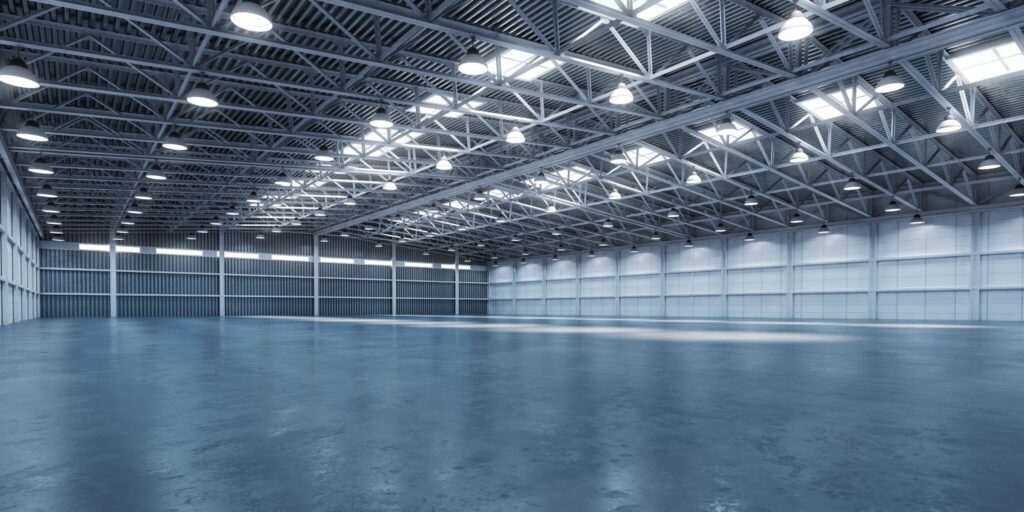Choosing the right industrial LED light is crucial for optimizing productivity and ensuring a safe working environment. With a myriad of options available in the market, it can be challenging to find the perfect fit for your specific needs. Providing insights into key factors that should influence your decision, here is a small guide on how to choose a good industrial LED light.
Lumens and color temperature
When selecting an industrial LED light, pay attention to lumens and color temperature. Lumens measure the brightness of the light, while color temperature determines the warmth or coolness of the light emitted. For most industrial settings, a higher lumen count is preferable to ensure satisfactory illumination.
Additionally, a color temperature in the range of 4000-5000 Kelvin is recommended for a balanced and natural light quality. Before you decide on the lumen and color temperature, consider the tasks performed in your industrial space and choose a light that complements these specific requirements. It’s worth noting that LED lights offer versatility in color temperatures, allowing you to customize the lighting to suit different areas within your facility.
Energy efficiency and cost savings
Industrial facilities often require lighting solutions that operate for extended periods both inside and outside the facilities. Opting for energy-efficient LED lights can significantly reduce your electricity bills and environmental impact. Look for lights with high efficacy ratings, indicating the amount of light produced per watt of energy consumed.
When it comes to outdoors, installing LED flood lights outperforms traditional lighting technologies in terms of energy efficiency, making them a cost-effective long-term investment. Also, consider LED fixtures with advanced features like dimming capabilities and motion sensors. These technologies enhance energy efficiency and contribute to extended fixture lifespan by reducing unnecessary usage during periods of low activity.
Durability and resistance to harsh conditions
Industrial environments can be demanding, with factors like dust, moisture, and vibrations. It’s essential to choose LED lights built to withstand these harsh conditions. Look for fixtures with robust construction, such as those with an IP65 or higher rating for water and dust resistance.
Furthermore, lights with shock-resistant features can withstand vibrations and impact, ensuring longevity in challenging industrial settings. For example, in manufacturing plants with heavy machinery, consider LED lights with reinforced housings and polycarbonate lenses to protect against potential impacts.
Optimal beam angle for task lighting
The beam angle of an industrial LED light determines the direction and spread of the emitted light. For task lighting in work areas, it’s crucial to choose a fixture with an appropriate beam angle to ensure uniform illumination. Narrow beam angles are suitable for focused task lighting, while wider angles are ideal for general area lighting.
In an assembly line, for instance, select LED lights with a narrow beam angle to illuminate specific workstations, enhancing visibility and precision. For larger spaces like warehouses, lights with a wider beam angle can provide even coverage, reducing shadows and improving overall safety.
Compatibility with controls and automation
Incorporating LED lights that are compatible with smart controls and automation systems can enhance efficiency and convenience. Consider fixtures that can be integrated with lighting control systems, allowing you to adjust brightness levels and schedules remotely.
This is particularly beneficial for facilities with varying operational hours, enabling you to optimize energy usage and tailor lighting conditions to specific tasks. For example, smart LED lights can be programmed to dim in areas with minimal activity, reducing energy consumption during non-peak hours.
Industry-specific certifications and standards
Check for industry-specific certifications and standards when selecting industrial LED lights. These certifications ensure that the lights meet safety, performance, and environmental requirements. For example, lights with NSF (National Sanitation Foundation) certification may be required to comply with hygiene standards.
Investing in lights that adhere to relevant standards ensures compliance with regulations and enhances the overall safety of your industrial facility. In addition, reputable manufacturers often provide warranties for certified products, giving you added confidence in the quality and reliability of your lighting fixtures.
The bottom line
When getting ready to choose a good industrial LED light, you have to consider various factors, including brightness, energy efficiency, durability, and beam angle. These aspects and the specific needs of your facility will help you make an informed decision to enhance lighting quality and contribute to cost savings and sustainability efforts. However, remember that the right lighting solution is an investment in the productivity, safety, and overall well-being of your industrial workspace.




